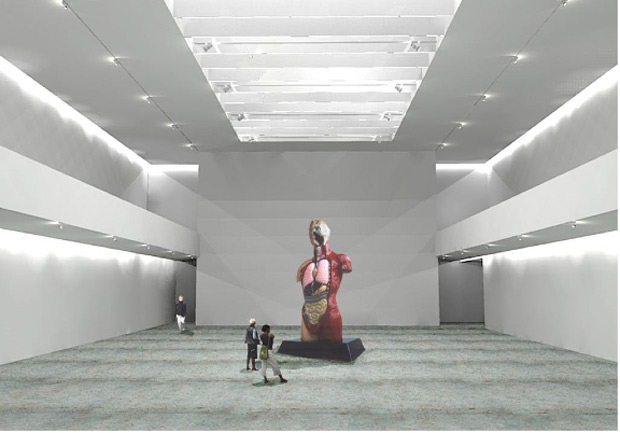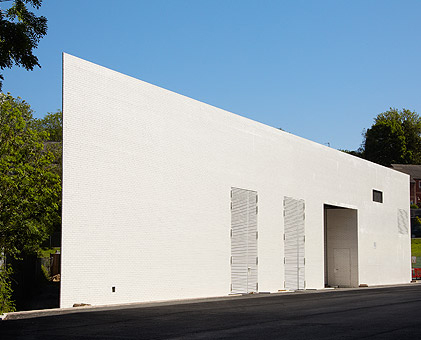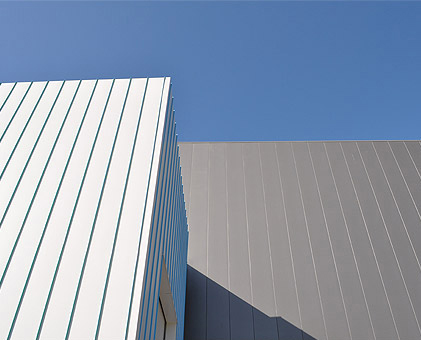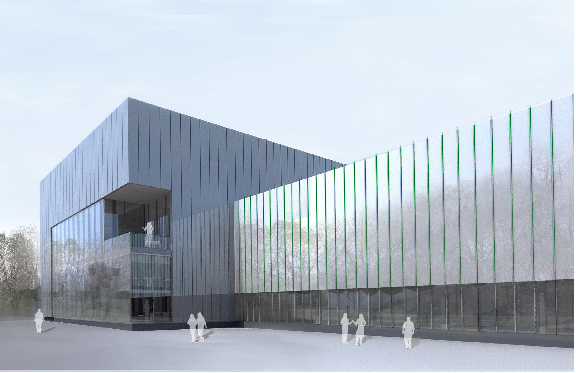
Damien Hirst's new 9,000 square-metre art studio
The artist's West Country studio, gallery and formaldehyde out-building is the world's largest art production site
When Damien Hirst chose to commission his own personal gallery and studio, he must have felt as if he could have picked any architect to work for him. Personal noteriety aside, who wouldn't taken a chance to design this, the biggest art production studio in the world, along with a space for messing about with dangerous chemicals?

So, it's heartening to see the artist chose a firm less than an hour's drive from the artist's base in Stroud, south-west England. Designscape Architects is a small firm based in nearby Bath, and has gained a reputation for thoughtful, environmentally sound buildings.
Their Science gallery and studios are stunning: minimal and austere, futuristic and clean. The Science Studio is a workspace, storage facility and private 18m-high gallery where Hirst can show off his latest creations to clients. Daylight enters in through a glazed roof. Designscape covered the outside with aluminum, and then stuck blue and green graphic tape between the seams of the cladding.

"The aim was to produce a wall that was intriguingly blue from one direction and green from the other," say the architects. "If you stand halfway down the elevation, you are not quite sure whether the building is blue or green."

While the Science studio comprises one high rectangular block and a lower square one, the formaldehyde building pushes into the limits of the angled site, with an acute corner. This one is clad in glazed white brickwork, reminiscent of an old-fashioned fishmongers. And it does have louvered doors, so there's plenty of natural ventilation for Hirst's staff inside working with dead animals.
To find out more, go here. For a greater understanding of ecological design and architecture, do take a look at our Vitamin Green book, and for a broader view of contemporary building trends, please also consider our Atlas of 21st Century World Architecture.